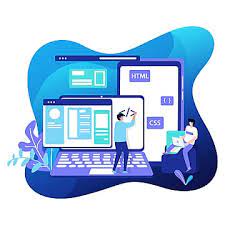In the realm of mobile app development, enhancing user experience (UX) stands as a paramount objective for developers worldwide. With the advent of Flutter, a versatile UI toolkit, designers and developers are empowered to create stunning and seamless user experiences across multiple platforms. In this article, we delve into the design and development strategies that elevate user experience with Flutter.
Understanding Flutter: A Brief Overview
Flutter, developed by Google, is an open-source framework for building natively compiled applications for mobile, web, and desktop from a single codebase. Its core strength lies in its widget-based architecture, enabling developers to create beautiful and responsive interfaces with ease. Flutter's hot reload feature facilitates rapid iteration, allowing developers to see changes instantly as they tweak the code.
Designing for Flutter: Principles and Best Practices
1. Material Design Guidelines
Leveraging Google's Material Design principles, Flutter offers a robust set of widgets and components that adhere to design standards for Android applications. By following Material Design guidelines, developers can ensure consistency and familiarity in their app's UI, enhancing usability and accessibility.
2. Cupertino Widgets for iOS
For iOS app development, Flutter provides Cupertino widgets that mimic the design aesthetics of iOS applications. By utilizing Cupertino widgets, developers can create native-like experiences for iOS users, ensuring seamless integration with the platform's UI paradigms.
3. Responsive Design
With Flutter's flexible layout system, developers can create responsive designs that adapt to various screen sizes and orientations. By designing adaptive layouts, apps can deliver a consistent experience across devices, whether it's a smartphone, tablet, or desktop.
Development Strategies for Optimal User Experience
1. Performance Optimization
Efficient performance is crucial for delivering a smooth user experience. Developers can optimize app performance by minimizing widget rebuilds, leveraging asynchronous programming, and implementing code splitting to reduce app size and improve loading times.
2. Gesture Recognition and Animation
Interactive gestures and animations enrich the user experience by providing feedback and engagement. Flutter app development offers built-in support for gestures and animations, empowering developers to create immersive interactions that delight users.
3. Accessibility Features
Inclusive design is fundamental to ensuring that all users, including those with disabilities, can effectively use the app. Flutter provides accessibility features such as screen reader support, semantic labeling, and focus management, enabling developers to create apps that are accessible to a diverse audience.
Conclusion
In conclusion, Flutter offers a powerful toolkit for designing and developing high-quality mobile applications. By adhering to design principles, implementing responsive layouts, and optimizing performance, developers can create user experiences that captivate and delight users across different platforms.


No comments yet